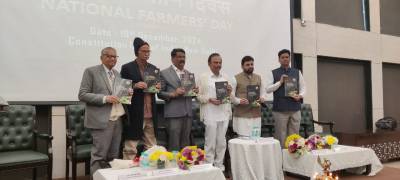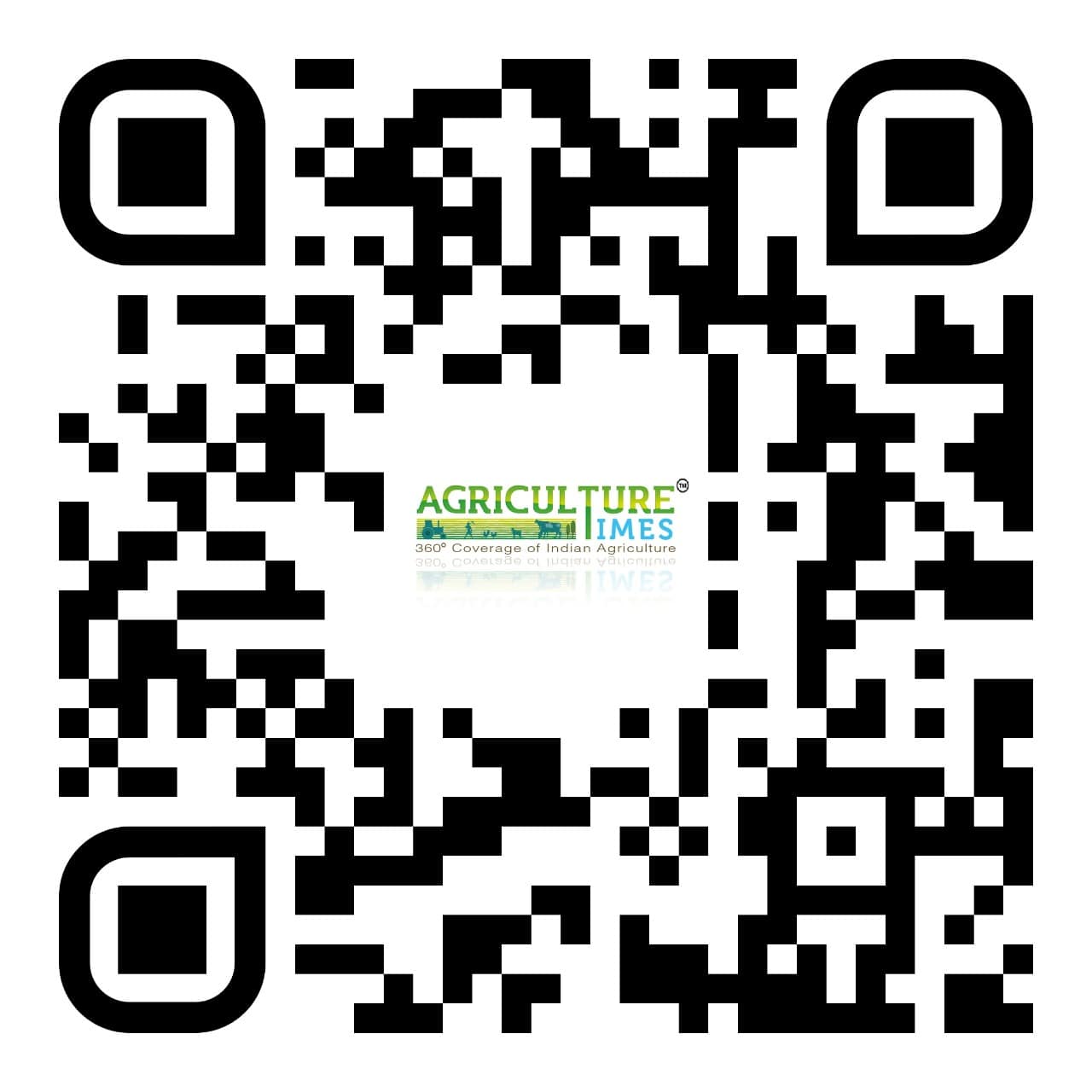NEW DELHI, 20 December 2024 : ul>
Agri sector expected to grow at a CAGR of 5.5?tween 2025 and 2030; to reach total value of 42 Lakh crore.
70% of Indian farmers expected to be on digital platforms for agricultural services, such as e-NAM and Kisan Portal, by 2030
Digital agriculture projected to increase productivity by 15%, cut costs by 10% by 2030.
Proposed 35% GST could adversely impact farmers growing cash crops
NEW DELHI, 20 December 2024: The Federation of All India Farmer Associations (FAIFA), a non-profit organization representing the cause of millions of farmers and farm workers of commercial crops across the States of Uttar Pradesh, Gujarat, Maharashtra, Andhra Pradesh, Telangana, Karnataka etc. celebrated Kisan Divas 2024 which falls on 23rd December by felicitating five farmers for their outstanding performance and pioneering contribution to the field of agriculture at a stellar ceremony.
FAIFA also released the ‘FAIFA Indian Agriculture Outlook 2025’ with insightful findings.
Pamma Badri Reddy of Andhra Pradesh was given the Lifetime Achievement Award; Sri. Jai Kishor Singh from Uttar Pradesh was given the Modern Innovative Award in Agriculture; Sri. Athar Matheen from Karnataka got the ‘Back to The Roots’ Award in Agriculture; Sri. Krishnat Shankar Magdum of Maharashtra was awarded Sustainable Agricultural Practices Award; and Sri Bandaru Ramanjaneyulu from Andhra Pradesh was bestowed with the Model Farmer of the Year Award.
On the occasion, FAIFA also released ‘FAIFA Indian Agriculture Outlook 2025’ with the theme ‘Empowering Indian Farmers - Progress, Outlook, and Recommendations’ to mark Kisan Divas.
The FAIFA report forecasts Indian agriculture to grow at a CAGR of 5.5% from 2025 to 2030, reaching a total value of INR 42 Lakh crore. Food grain production is projected to increase by 25% by 2030, from the current 330 million metric tonnes.
In terms of yield, wheat yields have the potential to increase by 20% to 5.5 metric tonnes per hectare by 2030, while rice yields are projected to increase by 25% to 4.5 metric tonnes per hectare by 2030, the FAIFA report said.
The report also emphasises on how Agristack, the Government’s initiative, a digital platform that integrates various stakeholders in the agriculture sector, has the potential to be a game-changer by improving agricultural productivity and farmer incomes. By offering a single-window access to services like soil testing, fertilizer recommendations, pest management, and market access, it enables farmers to make informed decisions, reduce transaction costs, and improve market access. It also promotes sustainable farming practices, reduces chemical usage, and supports soil health. Additionally, it strengthens agricultural governance by allowing government agencies to monitor and evaluate agricultural programs, making Agristack a transformative tool for modernizing agriculture.
Moreover, digitalisation is projected to power this thriving forecast. By 2030, 70% of Indian farmers are expected to be using digital platforms for agricultural services, such as e-NAM and Kisan Portal. Digital agriculture is projected to increase agricultural productivity by 15% and reduce costs by 10% by 2030. Adding to India’s food security further, the country’s irrigation coverage is expected to increase to 60% of agricultural land by 2030, up from 50% in 2025. Water harvesting and conservation efforts are projected to reduce water waste by 20% and increase water efficiency by 15% by 2030.
Javare Gowda, President, Federation of All India Farmer Associations (FAIFA) on the release of the report said, “The report highlights the significant progress made by Indian farmers and the agricultural sector as such over the last decade, driven by policy interventions, technological advancements, and changing market dynamics. The projections have been made basis the all-round robust and consistent growth the sector has witnessed in the last decade owing to the holistic approach of the Centre. This report projects a good prospect for the sector and also carries recommendations to ensure food security, enhance farmers' prosperity, and sustain healthy growth”.
Moreover, responding to the recommendation to slap 35% GST on tobacco, tobacco products and aerated beverages, Gowda said, “The ripple effect of 35% GST would adversely impact farmers of cash crops like tobacco and sugarcane, who form an important part of the growth story of India’s farm sector. This tax will lead to reduced demand, higher cost of agriculture, disruptions in supply chains, and will make consumers shift to illicit products. This tax will be anti-farmer, and hurt farmers of cash crops”
India's food grain production has consistently increased, with a compound annual growth rate (CAGR) of 2.5%. Crop yields have increased significantly, with wheat and rice yields rising by 25% and 30%, respectively. Irrigation coverage has expanded, with 50% of agricultural land now under irrigation. Digital platforms, such as e-NAM, have improved market access and reduced transaction costs.
However, challenges persist, including low productivity levels, weather variability, fragmented land holdings, and inadequate marketing infrastructure.
Murali Babu, General Secretary, Federation of All India Farmer Associations (FAIFA), said, “To sustain growth and ensure food security, the government must continue to invest in initiatives that enhance productivity, provide reasonable returns to farmers, and promote sustainable agriculture practices, the report recommends. Digitalization offers a promising solution, empowering farmers through better decision-making tools and improved market access.”
India's agricultural sector stands at a critical crossroads, requiring comprehensive reforms to ensure food security, enhance farmer livelihoods, and contribute to national economic growth. Addressing short-term, medium-term, and long-term challenges is essential for sustainable progress.
Ø Short-Term (2023-2025):
· Strengthen e-NAM, expand irrigation coverage, enhance crop insurance, promote organic farming, and improve agricultural education.
Ø Medium-Term (2025-2030):
· Implement national agricultural market policy, develop agricultural infrastructure, encourage private sector investment, foster agricultural research and innovation, and enhance farmers' skill development.
Ø Long-Term (2030-2040):
· Achieve 100% irrigation coverage, implement precision agriculture, develop climate-resilient practices, promote agro-tourism, and strengthen agricultural policy and governance.
Effective implementation, guided by a National Agricultural Development Council, will be crucial, supported by robust monitoring, evaluation, and stakeholder engagement. A phased, strategic approach will ensure that these recommendations lead to a resilient and prosperous agricultural sector for India.























